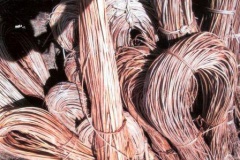Difference between revisions of "Rattan"
(→Description) |
|||
| Line 10: | Line 10: | ||
__TOC__ | __TOC__ | ||
==Description== | ==Description== | ||
| − | + | Rattan (from the Malay rotan) is the name for the roughly 600 species of palms in the tribe Calameae, native to tropical regions of Africa, Asia and Australasia. | |
| − | |||
| − | |||
| − | |||
| − | |||
| − | |||
<br><br> | <br><br> | ||
| − | + | ||
| − | The | + | Most rattans differ from other palms in having slender stems, 2–5 cm diameter, with long internodes between the leaves; also, they are not trees but are vine-like, scrambling through and over other vegetation. Rattans are also superficially similar to bamboo. Unlike bamboo, rattan stems ("malacca") are solid, and most species need structural support and cannot stand on their own. However, some genera (e.g. Metroxylon, Pigafetta, Raphia) are more like typical palms, with stouter, erect trunks. Many rattans have spines which act as hooks to aid climbing over other [[plants]], and to deter herbivores. Rattans have been known to grow up to hundreds of metres long. Most (70%) of the world's rattan population exist in Indonesia, distributed among Borneo, Sulawesi, Sumbawa islands. The rest of the world's supply comes from the Philippines, Sri Lanka, Malaysia and Bangladesh. |
<br><br> | <br><br> | ||
| − | + | In forests where rattan grows, its economic value can help protect forest land, by providing an alternative to loggers who forgo [[timber]] logging and harvest rattan canes instead. Rattan is much easier to harvest, requires simpler tools and is much easier to transport. It also grows much faster than most tropical wood. This makes it a potential tool in forest maintenance, since it provides a profitable crop that depends on rather than replaces trees. It remains to be seen whether rattan can be as profitable or useful as the alternatives. | |
| − | [[ | + | <br><br> |
| − | + | Generally, raw rattan is processed into several products to be used as materials in [[furniture]] making. The various species of rattan range from several millimetres up to 5–7 cm in diameter. From a strand of rattan, the skin is usually peeled off, to be used as rattan weaving material. The remaining "core" of the rattan can be used for various purposes in furniture making. Rattan is a very good material mainly because it is lightweight, durable, and -to a certain extent- flexible. | |
Revision as of 09:27, 28 February 2014
| Infobox on Rattan | |
|---|---|
| Example of Rattan |  |
| Facts | |
| Origin | - |
| Stowage factor (in m3/t) | - |
| Humidity / moisture | - |
| Oil content | - |
| Ventilation | - |
| Risk factors | - |
Rattan
Contents
Description
Rattan (from the Malay rotan) is the name for the roughly 600 species of palms in the tribe Calameae, native to tropical regions of Africa, Asia and Australasia.
Most rattans differ from other palms in having slender stems, 2–5 cm diameter, with long internodes between the leaves; also, they are not trees but are vine-like, scrambling through and over other vegetation. Rattans are also superficially similar to bamboo. Unlike bamboo, rattan stems ("malacca") are solid, and most species need structural support and cannot stand on their own. However, some genera (e.g. Metroxylon, Pigafetta, Raphia) are more like typical palms, with stouter, erect trunks. Many rattans have spines which act as hooks to aid climbing over other plants, and to deter herbivores. Rattans have been known to grow up to hundreds of metres long. Most (70%) of the world's rattan population exist in Indonesia, distributed among Borneo, Sulawesi, Sumbawa islands. The rest of the world's supply comes from the Philippines, Sri Lanka, Malaysia and Bangladesh.
In forests where rattan grows, its economic value can help protect forest land, by providing an alternative to loggers who forgo timber logging and harvest rattan canes instead. Rattan is much easier to harvest, requires simpler tools and is much easier to transport. It also grows much faster than most tropical wood. This makes it a potential tool in forest maintenance, since it provides a profitable crop that depends on rather than replaces trees. It remains to be seen whether rattan can be as profitable or useful as the alternatives.
Generally, raw rattan is processed into several products to be used as materials in furniture making. The various species of rattan range from several millimetres up to 5–7 cm in diameter. From a strand of rattan, the skin is usually peeled off, to be used as rattan weaving material. The remaining "core" of the rattan can be used for various purposes in furniture making. Rattan is a very good material mainly because it is lightweight, durable, and -to a certain extent- flexible.











